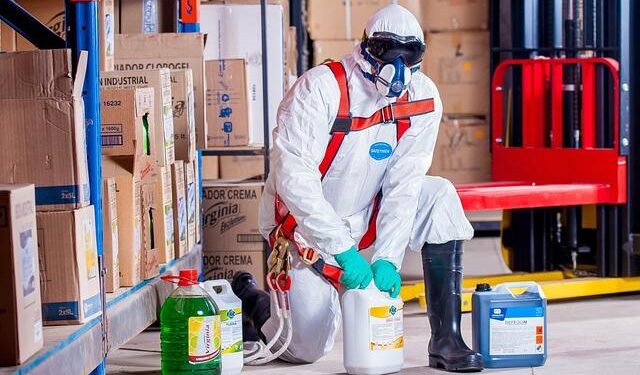Table of Contents
My English Bulldog, Winston, is the snorting, stubborn, snoring center of my universe.
As any Bulldog owner knows, their adorable flat faces come with a terrifying vulnerability: they are notoriously prone to overheating.1
Their brachycephalic anatomy, with its shortened airways, makes the simple act of panting—a dog’s primary cooling mechanism—a struggle.3
I knew this.
I was a responsible owner.
I read the articles, I bought the gear.
That’s why, on a sweltering, humid afternoon last July, I felt confident.
I had just purchased a highly-rated, popular evaporative cooling vest.
I soaked it in cool water, wrung it out, and fitted it snugly on Winston.
I was doing everything right.
The first ten minutes of our walk were fine.
Then, the signs began.
The panting, at first normal, deepened into a desperate, rasping gasp.
Thick, ropy drool began to hang from his jowls.
His eyes, usually full of goofy intelligence, became glassy and unfocused.
Then he stumbled.5
Panic clawed at my throat.
I knelt and touched the “cooling” vest.
The fabric was damp, yes, but it was sickeningly warm.
It felt like a hot, wet towel wrapped around his already-overheating body.
In that moment of horror, I realized the tool I had trusted for his safety was actively making things worse, trapping heat against his skin.6
Winston collapsed onto the grass.
The next five minutes were the longest of my life—a frantic rush to the emergency vet, my mind a screaming loop of guilt and terror.
The vet’s words were a cold shock: severe heat exhaustion, teetering on the edge of full-blown heatstroke, a condition that can lead to irreversible organ damage and death within minutes.7
We had caught it just in time.
But as Winston lay on the cool steel table, recovering, I made a promise.
I would understand
why this happened.
And I would find a solution that would never, ever fail him again.
The “Wet Towel” Fallacy: Why 90% of Dog Cooling Vests Can Fail When You Need Them Most
My journey started with a desperate need to understand the science behind my failure.
It turns out, the answer lies in a fundamental mismatch between how most cooling vests are designed and how dogs—and the weather—actually work.
Canine Thermoregulation 101: A System Under Strain
Humans are cooling marvels.
We have millions of sweat glands distributed across our skin, allowing us to shed heat efficiently through evaporation.
Dogs, however, are not so lucky.
Their primary cooling mechanism is panting, which is essentially evaporative cooling for their respiratory tract.8
They also have a small number of sweat glands on their paw pads and can dissipate some heat through vasodilation (widening of blood vessels in the skin) and conduction (lying on a cool surface), but these methods are far less effective.8
This system is easily overwhelmed.
When the ambient air temperature gets close to a dog’s body temperature (around 102.5°F or 39.2°C), panting becomes inefficient.
The dog is just breathing in hot air, and the cooling effect plummets.11
This is where the idea for a cooling vest comes in.
The Seductive, Simple Science of Evaporation
The vast majority of dog cooling vests on the market, including the one I had bought for Winston, are based on a simple principle: evaporative cooling.9
You soak the vest in water.
As that water turns from a liquid to a gas (evaporates), it requires energy in the form of heat.
It pulls this heat directly from the surface of the dog’s body, creating a cooling sensation.6
Many high-quality evaporative vests use a three-layer design to maximize this effect: a wicking outer layer to facilitate evaporation, an absorbent core to hold water, and a comfortable inner layer to keep the dog relatively dry.6
In the right conditions, this works.
But there’s a catastrophic catch.
The Achilles’ Heel: Humidity
The entire process of evaporation hinges on one critical factor: the surrounding air must be able to accept more water vapor.
This is measured as relative humidity.
In dry, arid climates, the air is thirsty for moisture, and evaporation happens quickly and effectively.6
But in humid environments, the air is already saturated with water vapor.
It’s like trying to dry a towel in a steam room—it simply can’t happen.15
When the humidity gets too high, the evaporative process grinds to a halt.
This is where the vest transforms from a cooling tool into a danger.
The water-logged fabric, no longer able to cool through evaporation, is now just a wet blanket.
It gets warmed by the dog’s own metabolic heat and by the sun’s radiation.
Instead of pulling heat away from the dog, it becomes an insulating layer, trapping both heat and moisture against the skin and fur.
This is the “wet towel” effect I experienced with Winston, and it can dangerously accelerate a dog’s journey into heatstroke.6
Some vests try to compensate by adding a reflective outer layer to block sunlight.
While this can reduce the surface temperature of the vest itself, it’s a fundamentally different and less effective mechanism.10
Thermal imaging tests have shown that these “sun shields” provide minimal active cooling to the dog’s core; they do little to remove the metabolic heat a dog generates through exercise or just existing.18
For an owner who needs to protect an active dog, this distinction is life-or-death.
To understand your dog’s specific risk, it’s crucial to look at their individual traits.
I created this matrix based on extensive veterinary research to help you assess your own dog’s vulnerability.
Canine Heatstroke Risk Matrix
| High-Risk Factor | The Physiological Reason for Risk | Breeds/Conditions at Highest Risk |
| Brachycephalic Anatomy | Compromised airway structure (shortened snout, narrow nostrils, elongated soft palate) makes panting inefficient and labored.1 | Pugs, French Bulldogs, English Bulldogs, Boxers, Shih Tzus, Boston Terriers, Cavalier King Charles Spaniels.3 |
| Thick/Double Coat | Dense fur is designed to insulate against cold, but it also traps an insulating layer of hot air against the skin in summer, preventing heat dissipation.1 | Huskies, Golden Retrievers, Chow Chows, Saint Bernards, Malamutes, Samoyeds.3 |
| Large Body Mass (>15 kg / 33 lbs) | A larger body generates more metabolic heat and has a lower surface-area-to-volume ratio, making it harder to cool down efficiently.2 | Great Danes, Mastiffs, Saint Bernards, Rottweilers, Labrador Retrievers.4 |
| Dark Coat Color | Dark-colored fur absorbs more solar radiation (heat) from the sun compared to lighter-colored fur.19 | Black Labradors, black Poodles, dark-coated Rottweilers, etc. |
| Obesity | Excess fat acts as an extra layer of insulation, trapping heat and making it significantly harder for the dog to regulate its body temperature.1 | Overweight dogs of any breed. |
| Age (Senior/Puppy) | Very young and very old dogs have less efficient thermoregulatory systems and may have underlying health issues that compound the risk.1 | Dogs over 7 years, puppies under 6 months. |
| High-Energy Temperament | Working and sporting breeds may push themselves past their limits, generating extreme metabolic heat without showing early signs of distress.3 | Border Collies, Belgian Malinois, English Springer Spaniels, Boxers.2 |
| Pre-existing Medical Conditions | Conditions affecting the heart or respiratory system (like laryngeal paralysis or heart disease) directly impair the body’s ability to cope with heat stress.2 | Dogs with heart murmurs, collapsing trachea, BOAS (Brachycephalic Obstructive Airway Syndrome).2 |
Looking at this chart, I saw Winston ticking multiple boxes: Brachycephalic, large body mass, a tendency toward being overweight.
I had been playing Russian roulette with a technology that was fundamentally unsuited for my dog and my climate.
I needed a better answer.
An Epiphany from Outer Space: What Medical Patients and Astronauts Taught Me About True Cooling
My research took me far beyond the pet aisle.
I became obsessed with a single question: If evaporative cooling is so unreliable, what do people use when failure is not an option? The answer came from two of the most extreme environments imaginable: outer space and the human body battling chronic illness.
My first breakthrough came from NASA. I learned that in the vacuum of space, where astronauts face temperature swings from −250°F (−157°C) in shadow to +250°F (+121°C) in sunlight, their suits must provide active thermal regulation.22
While the main suit uses a liquid-cooling garment, for areas requiring high dexterity like gloves, NASA uses something called
Phase-Change Material (PCM).22
These materials actively absorb massive amounts of heat to keep the astronaut’s hands from overheating, a system that works independently of the external environment.24
The second clue was even more profound.
I discovered that medical-grade cooling vests are prescribed for patients with conditions like Multiple Sclerosis (MS).
Up to 80% of people with MS suffer from thermosensitivity, where even a slight increase in core body temperature can trigger debilitating symptoms like fatigue, blurred vision, and cognitive impairment.26
For these patients, reliable cooling isn’t a luxury; it’s a medical necessity.
And their vests don’t use water.
They use sealed packs filled with PCM that are engineered to maintain a constant, therapeutically cool temperature—often around
58°F (14°C)—for hours, regardless of the weather.27
The Multiple Sclerosis Association of America (MSAA) even runs a program to distribute these specific vests to patients in need.30
This was my epiphany.
The problem wasn’t that cooling vests were a bad idea; it was that the consumer pet market was dominated by the wrong type of technology for high-risk situations.
This led me to a new framework:
- An evaporative vest is like a “Swamp Cooler”: passive, simple, and completely dependent on a dry environment to function.
- A PCM vest is like a “Personal Thermostat”: an active, self-contained system that creates its own cool microclimate, reliably and predictably, no matter the external conditions.
The Science of a Personal Thermostat
So, how does this “magic” material work? The science is surprisingly elegant.
A phase-change material is a substance that absorbs an enormous amount of heat energy (called latent heat of fusion) as it transitions from a solid to a liquid, all while maintaining a constant temperature.31
The most intuitive analogy is a glass of ice water.
As long as there is a single ice cube left, the water will stay at a steady 32°F (0°C).
All the heat energy from the room is being used to fuel the phase change—melting the ice—rather than raising the water’s temperature.12
PCM vests apply this same principle.
They are filled with packs of non-toxic substances (like specialized paraffin waxes or salt hydrates) that are engineered to have a “melting” point at a specific, safe temperature, such as 58°F (14°C).32
When you place this vest on your warm dog, the dog’s body heat begins to “melt” the solid P.M. The PCM continuously absorbs this heat to fuel its transition to a liquid, keeping the vest at a steady
58°F and actively drawing heat away from your dog’s core.12
This is a paradigm shift from passive to active cooling.
An evaporative vest is at the mercy of the environment.
A PCM vest creates its own environment.
This is why it’s the technology of choice for astronauts, soldiers in impermeable chemical-protection suits, and medical patients.27
It’s also safer.
Ice packs can be dangerously cold, causing surface blood vessels to constrict, which paradoxically traps heat in the body’s core and can even cause frostbite.6
PCMs are engineered to be effective without being dangerously cold, a profile validated by their use in medicine.37
The Personal Thermostat Framework: A New System for Choosing the Right Cooling Technology
Armed with this new understanding, I realized that choosing a cooling vest isn’t about picking the “best” brand.
It’s about conducting a risk assessment and selecting the right class of technology for your specific dog and climate.
The choice is not between two similar products, but between two fundamentally different cooling philosophies.
To make this clear, I’ve organized the available technologies into a three-tiered framework.
- Category 1: Evaporative Coolers (The Swamp Cooler)
- Category 2: Reflective Shields (The Sun Blocker)
- Category 3: Phase-Change Systems (The Personal Thermostat)
The table below breaks down the critical differences, allowing you to move beyond marketing claims and make a decision based on science.
The Ultimate Dog Cooling Technology Comparison
| Technology Type | Core Mechanism | Performance in High Humidity | Best Use Case | Critical Weakness | The Analogy |
| Evaporative | Pulls heat away as water evaporates from fabric.9 | Poor to Ineffective. Can become an insulating heat trap.6 | Low-risk dogs in consistently dry, arid climates (e.g., Arizona, Utah, high desert). | Fails completely in humidity; requires constant re-wetting to remain effective.6 | Swamp Cooler |
| Reflective | Reflects a percentage of incoming solar radiation away from the dog’s coat.10 | Unaffected by humidity, but does not provide active cooling of the dog’s core.18 | A supplement for dark-coated dogs during lower-intensity activity in sunny, open areas. | Does not remove internally generated metabolic heat from exercise or basic bodily function.18 | Car Sunshade |
| Phase-Change Material (PCM) | Solid PCM packs absorb the dog’s body heat, melting at a constant, safe temperature (e.g., 58°F/14°C).12 | Excellent. Performance is completely independent of humidity, airflow, or ambient temperature.16 | High-risk breeds and/or any dog in humid climates; high-intensity activity; situations where failure is not an option. | Higher initial cost; cooling duration is finite and limited by the packs (typically 2-3 hours).32 | Personal Thermostat |
Deep Dive: A Buyer’s Guide to the Three Tiers of Cooling Vests
Once you’ve identified the right technology for your needs using the framework above, you can start looking at specific products.
Here is a breakdown of the best-in-class options within each tier, based on my research and extensive user feedback.
Tier 1: Evaporative Vests (For the Right Dog in the Right Place)
Crucial Caveat: I cannot stress this enough.
These vests are only appropriate for dogs with a low-risk profile who live in consistently dry, low-humidity climates.
If you live in Florida, the Northeast, the Midwest, or anywhere with humid summers, this is not the right technology for you.
When shopping, look for a quality three-layer construction, good torso coverage, secure side-release buckles (not Velcro, which can get clogged with fur), and a leash portal on the back to be worn over a harness.6
- Top Pick: Ruffwear Swamp Cooler
This is the undisputed market leader for a reason. It’s exceptionally well-made, offers great coverage, and has overwhelmingly positive reviews from users in appropriate climates.14 Users praise its durability on hikes and its noticeable cooling effect.43 However, it is essential to acknowledge its known failure points: users in humid areas report it becomes ineffective, and it requires frequent re-wetting to maintain its cooling power, sometimes every 30-60 minutes.38 - Strong Alternative: Hurtta Cooling Wrap
The Hurtta wrap features a unique design that focuses cooling on the dog’s chest and core, which is physiologically sound as it targets major blood vessels.46 It has excellent water absorption capacity and is praised for its comfortable, flexible fit.47 The main drawbacks noted by users are that the material can be prone to snagging on brush and the zipper-based fit is less adjustable than the Ruffwear’s buckles.46 - Other Notables: Canada Pooch and Kurgo
These brands offer strong competition, often praised for their stylish designs, wide range of sizes, and highly adjustable fits, which can be great for dogs with unusual body shapes.48
Tier 2: Reflective Vests (Sun Shields, Not True Coolers)
Crucial Caveat: Remember, these are supplemental tools.
They are designed to reduce the amount of heat your dog absorbs from direct sunlight.
They will not actively cool a dog that is generating metabolic heat from exercise.
- Top Pick: Chillybuddy Canine Cooling Jacket
This jacket uses a specialized “Aluminet” fabric, a woven material that functions like thousands of tiny mirrors to reflect up to 70% of infrared radiation.39 Real-world tests confirm it can significantly lower the surface temperature of a dog’s coat in direct sun.39 However, thermal imaging shows it does not provide the active core cooling seen in other technologies.18 It’s an excellent choice for a black dog lounging on a sunny deck, but not for a hike.
Tier 3: Phase-Change Material (PCM) Vests (The Gold Standard for Safety & Performance)
This is the category that saved Winston, and it is my unshakeable recommendation for any owner of a high-risk dog or anyone living in a humid climate.
This technology is an investment in your dog’s safety.
When shopping, ensure you are buying a vest with true PCM packs, not generic gel or ice packs.
Look for a robust vest material, good coverage of the dog’s chest and back, and consider purchasing an extra set of cooling packs for all-day adventures.
- Top Pick: Glacier Tek ChillyDog Vest
This is a premier, professional-grade option. It was originally designed for search-and-rescue and law enforcement K9s, a testament to its durability and reliability in high-stakes environments.51 It uses pure PCM packs that maintain a constant
59°F (15°C) for up to 2.5 hours and can be recharged quickly in ice water.52 User reviews are overwhelmingly positive, with owners in hot, humid climates like Texas and Florida calling it a “necessity” and a “life saver”.52 Note that it is specifically designed for medium-to-large dogs (typically 50-60 lbs and up).51 - Top Pick: TechKewl Phase Change Cooling Vest
This is another top-tier brand that utilizes the same PCM technology, often marketed to working dogs.32 It provides constant
58°F (14°C) cooling for 2-3 hours and is praised by users for its effectiveness even in extreme heat and humidity.33 It is sold by several distributors and is considered a direct competitor to the ChillyDog vest, representing the gold standard in this category.54
A note on the “harness vs. vest” debate: Some brands now offer “cooling harnesses”.50
While these can be convenient, the primary safety factor is the cooling engine.
An evaporative harness is still an evaporative product and carries the same risks in humidity.
For any high-risk dog, a PCM vest will always be a safer choice than an evaporative harness, regardless of the form factor.
Safety first, convenience second.
Beyond the Vest: Building a Complete Summer Safety System
The most dangerous mindset an owner can have is, “I bought the gear, so my dog is safe.” Even the best technology is not a magic bullet.
As one study wisely notes, “Even if you buy all available cooling products, your dog can still overheat”.18
A cooling vest should be one component of a comprehensive, multi-layered safety system.
- Proactive Environmental Management: The best defense is avoiding peak heat. Walk your dog in the early morning or late evening when temperatures are coolest.20
- Vigilant Monitoring: Know the early signs of heat stress: excessive panting, thick drool, lethargy, confusion, and stumbling.1 If you see them, stop all activity immediately, find shade, and apply cool (not ice-cold) water to your dog’s paws and belly.
- Constant Hydration: Always carry more water than you think you will need. Offer it frequently. Dehydration severely compromises a dog’s ability to regulate its temperature.19
- Situational Awareness: Before you even leave the house, test the pavement with the back of your hand. If it’s too hot for you to hold for five seconds, it’s too hot for your dog’s paws.55
- Debunking Dangerous Myths: Never shave a double-coated dog. Their coat provides insulation from both heat and cold and protects their skin from sunburn.11 Also, remember that fans are not very effective for dogs; because they don’t sweat through their skin like humans, a fan does little to cool them.20
Final Verdict: My Unshakeable Recommendations for Every Dog and Climate
My journey with Winston began with terror and guilt and ended with the quiet confidence that comes from deep understanding.
Today, Winston enjoys his summer walks, even on humid days.
He wears his PCM vest—his personal thermostat—and remains comfortable, happy, and, most importantly, safe.
The frantic panting is gone, replaced by the happy snorts of a Bulldog enjoying the world.
That peace of mind is what I want for you.
To make it simple, I’ve distilled everything I’ve learned into this final, definitive guide.
Find your situation, and you’ll find your answer.
Final Recommendations: The Best Cooling Vest for Your Dog
| Your Situation | My Recommendation | My Top Pick | The Bottom Line |
| I live in a hot, HUMID climate (e.g., Florida, NYC, Houston) AND/OR my dog is high-risk (Pug, Golden, senior, etc.). | Phase-Change Material (PCM) Vest | Glacier Tek ChillyDog or TechKewl Phase Change Vest | This is a non-negotiable safety investment. PCM is the only technology that provides reliable, active cooling when and where you need it most. It is the standard of care for high-stakes applications for a reason. |
| I live in a hot, DRY climate (e.g., Arizona, Utah) AND my dog is low-to-moderate risk. | High-Quality Evaporative Vest | Ruffwear Swamp Cooler | In these specific environmental conditions, evaporation is an effective and more affordable strategy for dogs that are not in the highest-risk categories. Monitor wetness vigilantly. |
| My primary concern is blocking intense sun for my dark-coated dog during lower-intensity outings. | Reflective Vest (as a supplement) | Chillybuddy Canine Cooling Jacket | Think of this as a sun shield, not a core cooling engine. It reduces solar heat gain but will not remove the metabolic heat your dog generates during exercise. |
True care for our dogs doesn’t come from simply buying a product.
It comes from the relentless pursuit of understanding, from questioning “common knowledge,” and from investing in the science that truly keeps them safe.
That journey, from near-tragedy to informed safety, is the greatest responsibility—and the greatest reward—of being a dog owner.
Works cited
- Summer Dog Care: Why Some Dog Breeds Are More Prone to Heatstroke, accessed August 12, 2025, https://khpet.com/blogs/dogs/summer-dog-care-why-some-dog-breeds-are-more-prone-to-heatstroke
- Heatstroke in dogs | Dog health – The Kennel Club, accessed August 12, 2025, https://www.thekennelclub.org.uk/health-and-dog-care/health/health-and-care/a-z-of-health-and-care-issues/heatstroke-in-dogs/
- Summer Alert: Dog Breeds at Higher Risk of Heat Stroke – Fur Ball Story, accessed August 12, 2025, https://furballstory.com/blogs/trending-blogs-this-week/summer-alert-which-dog-breeds-are-at-a-higher-risk-of-heat-stroke
- 14 Dog Breeds That Are at a Higher Risk for Heat Stroke – Neater Pets, accessed August 12, 2025, https://neaterpets.com/blogs/news/14-dog-breeds-that-are-higher-risk-heat-stroke
- How to recognise and treat heatstroke in dogs – RSPCA – rspca.org.uk, accessed August 12, 2025, https://www.rspca.org.uk/adviceandwelfare/pets/dogs/health/heatstroke
- Do Dog Cooling Vests Really Work? – Fitwarm, accessed August 12, 2025, https://www.fitwarm.com/blogs/news/do-dog-cooling-vests-really-work
- Pathophysiology of heatstroke in dogs – revisited – PMC – PubMed Central, accessed August 12, 2025, https://pmc.ncbi.nlm.nih.gov/articles/PMC5800390/
- Davies Veterinary Specialists Guide on How to Keep Hot Dogs Cool, accessed August 12, 2025, https://www.vetspecialists.co.uk/fact-sheets-post/davies-veterinary-specialists-guide-on-how-to-keep-hot-dogs-cool/
- Dog Cooling Coats: Do they really work? And does my dog actually need one?, accessed August 12, 2025, https://pawdawoflondon.com/blogs/pupdates/dog-cooling-coats-do-they-really-work-and-does-my-dog-actually-need-one
- Cooling Vests for Dogs – Whole Dog Journal, accessed August 12, 2025, https://www.whole-dog-journal.com/lifestyle/cooling-vests-for-dogs/
- Cool That Hot Dog, accessed August 12, 2025, https://fwp.mt.gov/binaries/content/assets/fwp/conservation/upland-game-bird-enhancement/keep-your-dog-cool-04252012185725.pdf
- Do Dog Cooling Vests Work (+Tips for Summer Comfort) – Glacier Tek, accessed August 12, 2025, https://glaciertek.com/blogs/insights/dog-cooling-vests-work
- pawdawoflondon.com, accessed August 12, 2025, https://pawdawoflondon.com/blogs/pupdates/dog-cooling-coats-do-they-really-work-and-does-my-dog-actually-need-one#:~:text=Most%20dog%20cooling%20coats%20work,the%20dog’s%20skin%20and%20fur.
- Swamp Cooler™ Cooling Dog Vest | Ruffwear, accessed August 12, 2025, https://ruffwear.com/products/swamp-cooler-dog-cooling-vest
- Evaporative Cooling 101 – Ruffwear, accessed August 12, 2025, https://ruffwear.com/pages/evaporative-cooling-101
- Help me choose – EZCooldown, accessed August 12, 2025, https://www.ezcooldown.com/pages/help-me-choose
- Favorite cooling vests and pads? : r/k9sports – Reddit, accessed August 12, 2025, https://www.reddit.com/r/k9sports/comments/1k2t5u0/favorite_cooling_vests_and_pads/
- Do Dog Cooling Vests Actually Work? – Dog Gear Review, accessed August 12, 2025, https://doggearreview.com/article/coolingvest/
- Overheating in Dogs: Signs, Symptoms, and Treatments – American Kennel Club, accessed August 12, 2025, https://www.akc.org/expert-advice/health/overheating-in-dogs/
- Tips To Help Your Dog Cool Down – Rover.com, accessed August 12, 2025, https://www.rover.com/blog/cooling-products-for-dogs/
- Dog Overheating? Reading This Could Save Your Dog’s Life – Dr. Buzby’s ToeGrips for Dogs, accessed August 12, 2025, https://toegrips.com/dog-overheating/
- NASA Space Suit Temperature Control Explained in 60 Seconds – YouTube, accessed August 12, 2025, https://www.youtube.com/watch?v=KMXxs39bIkc
- “Taternauts” and Spacesuits: How Astronauts Stay Safe in Space, accessed August 12, 2025, https://airandspace.si.edu/stories/editorial/taternauts-and-spacesuits-how-astronauts-stay-safe-space
- Keeping Your Cool – NASA, accessed August 12, 2025, https://www.nasa.gov/stem-content/keeping-your-cool/
- Space suit – Wikipedia, accessed August 12, 2025, https://en.wikipedia.org/wiki/Space_suit
- Beat the Heat: Marianjoy’s Cooling Vest Program for MS Patients, accessed August 12, 2025, https://breakthroughsforphysicians.nm.org/rehabilitation-clinical-article-cooling-vest-program
- Cooling Vests & Products for MS | Cold Vests for Multiple Sclerosis – Glacier Tek, accessed August 12, 2025, https://glaciertek.com/collections/medical-therapy
- Cooling for Multiple Sclerosis and Other Heat Intolerant Conditions – Polar Products, accessed August 12, 2025, https://www.polarproducts.com/polarshop/pc/Cooling-for-Multiple-Sclerosis-and-Other-Heat-Intolerant-Conditions-c442.htm
- The 10 Best Cooling Vests for Multiple Sclerosis (MS) – Healthline, accessed August 12, 2025, https://www.healthline.com/health/multiple-sclerosis/best-cooling-vests
- Cooling Products – MSAA, accessed August 12, 2025, https://mymsaa.org/msaa-help/cooling-products/
- Phase-change material – Wikipedia, accessed August 12, 2025, https://en.wikipedia.org/wiki/Phase-change_material
- K9 COOLING VESTS – 4 PAWS, accessed August 12, 2025, https://4pawsforpolice.org/k9-cooling-vests/
- TechKewl Cooling Vest – J&J Dog Supplies, accessed August 12, 2025, https://www.jjdog.com/techkewl-cooling-vest/
- TechKewl Phase Change Cooling Dog Jacket – CozyWinters, accessed August 12, 2025, https://cozywinters.com/shop/phase-cooling-dog-vest.html
- Keeping Your Cool: The Personal Thermal Management System – DVIDS, accessed August 12, 2025, https://www.dvidshub.net/news/printable/355591
- Treatment of Hyperthermia and Heat-Induced Illness – WSAVA 2015 Congress – VIN, accessed August 12, 2025, https://www.vin.com/apputil/content/defaultadv1.aspx?id=7259207&pid=14365
- Medical applications – pcm-ral, accessed August 12, 2025, https://pcm-ral.org/pcm/pcm-application-areas/medical-applications/
- Anyone had success with dog cooling vests? : r/puppy101 – Reddit, accessed August 12, 2025, https://www.reddit.com/r/puppy101/comments/13otviy/anyone_had_success_with_dog_cooling_vests/
- Chillybuddy Canine Cooling Jacket – Clean Run, accessed August 12, 2025, https://www.cleanrun.com/product/chillybuddy_dog_cooling_jacket/index.cfm
- Choosing the Right Cooling Vest: Evaporative, Phase Change or Circulatory 2024, accessed August 12, 2025, https://support.thewarmingstore.com/support/solutions/articles/5000890247-choosing-the-right-cooling-vest-evaporative-phase-change-or-circulatory-2024
- 3 Best Dog Cooling Vests of 2025 (Field-Tested) – Treeline Review, accessed August 12, 2025, https://www.treelinereview.com/gearreviews/best-dog-cooling-vests
- Ruffwear Swamp Cooler Cooling Vest | REI Co-op, accessed August 12, 2025, https://www.rei.com/product/248058/ruffwear-swamp-cooler-cooling-vest
- Review: The Ruffwear Swamp Cooler Vest Is a Top Pick for Outdoor Adventures, accessed August 12, 2025, https://www.rover.com/blog/review-ruffwear-swamp-cooler-vest/
- Best cooling gear? : r/RunningWithDogs – Reddit, accessed August 12, 2025, https://www.reddit.com/r/RunningWithDogs/comments/1klce2b/best_cooling_gear/
- Dog Cooling Ruffwear : r/dogs – Reddit, accessed August 12, 2025, https://www.reddit.com/r/dogs/comments/1l6prz1/dog_cooling_ruffwear/
- Hurtta Cooling Wrap Review – Dog Gear Review, accessed August 12, 2025, https://doggearreview.com/review/hurttacoolingwrap/
- Hurtta Cooling Vest – Dogs That Hike, accessed August 12, 2025, https://dogsthathike.com/hurtta-cooling-vest/
- Best Dog Cooling Vests to Help Your Dog Chill Out, accessed August 12, 2025, https://blog.homesalive.ca/dog-blog/best-dog-cooling-vests-2025
- The 7 Best Dog Cooling Vests and Bandanas To Beat the Summer Heat – Rover.com, accessed August 12, 2025, https://www.rover.com/blog/dog-cooling-vests-to-beat-the-heat-this-summer/
- Cool Comfort: Comparing Cooling Harnesses and Cooling Vests for Dogs – Canada Pooch, accessed August 12, 2025, https://canadapooch.com/blogs/news/cool-comfort-comparing-cooling-harnesses-and-cooling-vests-for-dogs
- Dog Cooling Vests | Cooling Jackets for Dogs – Glacier Tek, accessed August 12, 2025, https://glaciertek.com/collections/dogs
- ChillyDog Dog Cooling Vest – Glacier Tek, accessed August 12, 2025, https://glaciertek.com/products/chillydog-cool-vest-with-pack-set
- Pack Set for ChillyDog Vest – Glacier Tek, accessed August 12, 2025, https://glaciertek.com/products/chillydog-pack-set
- CoolPax Phase Change Cooling Dog Coat – StayWarm-StayCool, accessed August 12, 2025, https://staywarm-staycool.com/coolpax-phase-change-cooling-dog-coat/
- Heatstroke in dogs and cats – prevention, symptoms and first aid tips for pet owners, accessed August 12, 2025, https://www.rvc.ac.uk/small-animal-vet/teaching-and-research/fact-files/heatstroke-in-dogs-and-cats
- The Three Progressive Stages Of Heat-related Illness In Dogs – Eukanuba, accessed August 12, 2025, https://us.eukanuba.com/articles/dog-care/the-three-progressive-stages-of-heat-related-illness-hri






